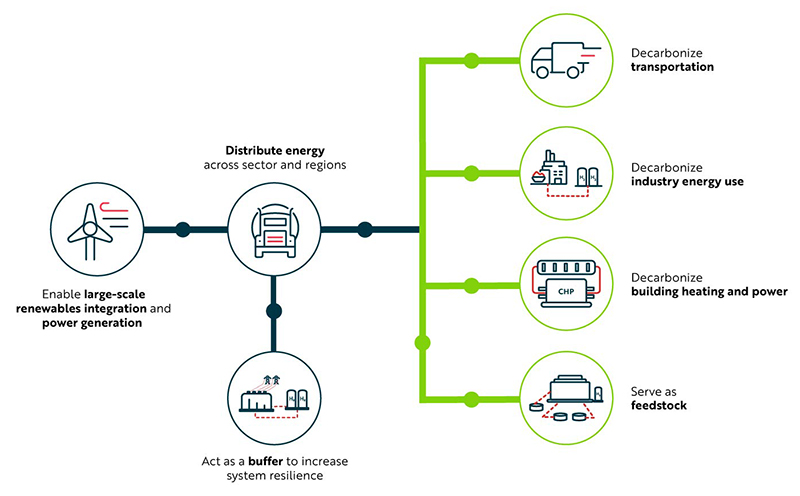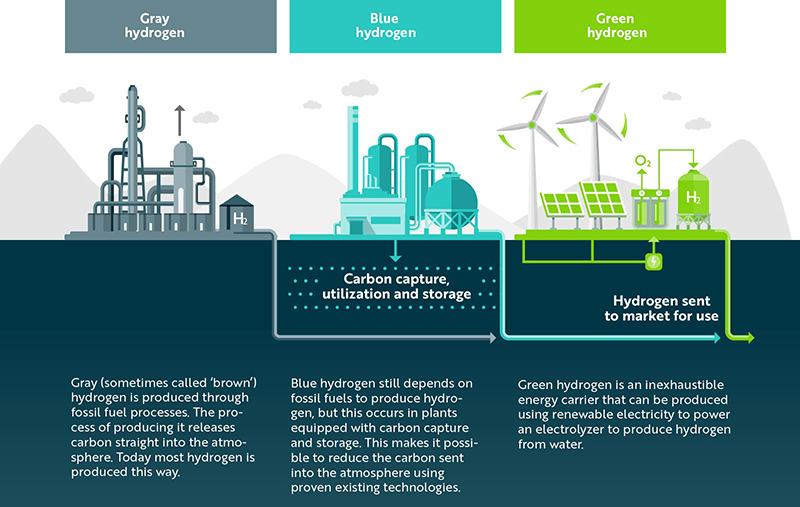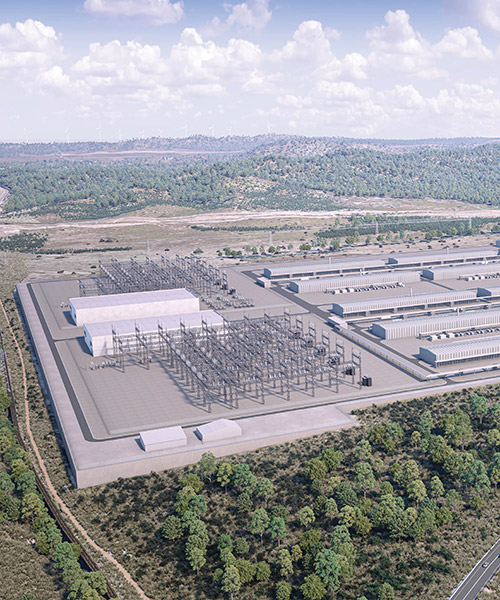June 10, 2020 • 5 min read
What role can renewable hydrogen play in supporting energy demands?
Hydrogen is almost exclusively produced through fossil fuel processes today, which release large amounts of CO2 unabated into the atmosphere.
These production methods do not align with the urgent need to reduce global greenhouse gas emissions and limit the impacts of climate change.
Electrification, renewable energy and energy storage will get us part of the way to decarbonizing the world's most energy intensive industries, without needing hydrogen or fossil fuel energy. However, even with the rapid deployment of solar and wind, electrification can’t do everything. It will likely only meet about half of our expected final energy usage.
Can renewable hydrogen – also known as green hydrogen – fill this gap?
The inputs required to produce renewable hydrogen
To produce renewable hydrogen, you need renewable electricity and an electrolyzer. This electrolysis process splits water into oxygen and hydrogen. There are no greenhouse gas emissions at any point in this process.
This hydrogen can be stored, transported and processed for a growing range of applications. And it's possible to produce anywhere with viable renewable energy resources.

What can renewable hydrogen do?
Hydrogen’s use in industry is nothing new. It’s currently required in many commercial applications such as ammonia production, refining and as a feedstock for chemicals.
However, the greatest potential of renewable hydrogen is for industries such as steel, aviation and long haul sea and road transport where there is no immediate alternative to decarbonize. The processes of these industries will have to be tackled for companies to maintain their social license, and renewable hydrogen is one way to transform them.
The big advantage of renewable hydrogen is that it leaves only water vapor behind when burned. For industries that require heat, such as foundries and glass and steelmakers, this could reduce the need for fossil fuels.
Renewable hydrogen can also be a tool to deal with variability in electricity systems. In times of excess solar and wind power production, it can be converted into hydrogen to be used elsewhere. Or even to produce electricity.
There are also opportunities to use hydrogen to fuel heavy transport like trucks, trains and even aircraft.

The challenges of renewable hydrogen
The biggest challenge today is system cost. To reduce the costs of renewable hydrogen production, the industry needs to reach economies of scale.
We’re already seeing new pathways emerge in some of the projects we’re working on, including installing 36 gigawatts of electrolyzer capacity on an artificial island off the Netherlands and injecting hydrogen into high pressure natural gas pipelines in Canada.
There are also concerns about conversion efficiency. However, in a system that’s going to be increasingly reliant on abundant, low cost renewable energy, efficiency is not the main worry. It’s going to become less of an issue as more renewable energy is generated.
People often see renewable hydrogen in competition with renewable electricity, even getting into debates about whether we need both. However, even with an increase in renewables, we will still only meet about half of the necessary decarbonization requirements. Renewable hydrogen can pick up the shortfall.
Opportunities to use existing energy infrastructure
Once renewable hydrogen is produced and stored, it needs to be transported. And these transportation routes don’t always have to be built from scratch.
One of the main drivers, especially in places with well developed natural gas networks such as Europe, is the potential of using existing gas infrastructure to transport hydrogen.
Europe, as an example, will have large amounts of new offshore wind in the northern parts of Europe and additional solar generation in the southern parts. However, it doesn’t have the infrastructure to take that to the load centers.
By turning that electricity into gaseous hydrogen, it's possible to use the existing gas grid to transport it. There are thousands of kilometers of gas pipelines that are already available.
This opportunity could significantly reduce costs in the hydrogen industry. And it can reduce the need for additional overhead power lines, which face lengthy permitting procedures.
The demand profile for hydrogen is growing
Commercial applications of hydrogen are nothing new. However, carbon intensive heavy industrials like oil refineries and petrochemical plants are now taking leading roles in lower carbon emissions hydrogen projects across the world.
In particular, owners of gas pipelines are looking for a decarbonized component of their business, oil refineries are looking for less carbon intensive feedstocks, and ammonia and fertilizer manufacturers want to reduce their reliance on gas suppliers.
What needs to happen for renewable hydrogen to fulfill its potential?
To reduce the cost of producing renewable hydrogen, projects need to move ahead. The industry needs to start building plants to grow confidence, expertise, and economies of scale. And there are multiple ways to reduce costs, such as standardizing production facilities, collaborating across industries, and embracing digital technologies to deliver projects more efficiently.
Renewable hydrogen is a complex industry. And like anything new, there are some challenges to overcome. But renewable hydrogen has a role to fill in decarbonizing industries that need more complex solutions than renewable electricity alone.







